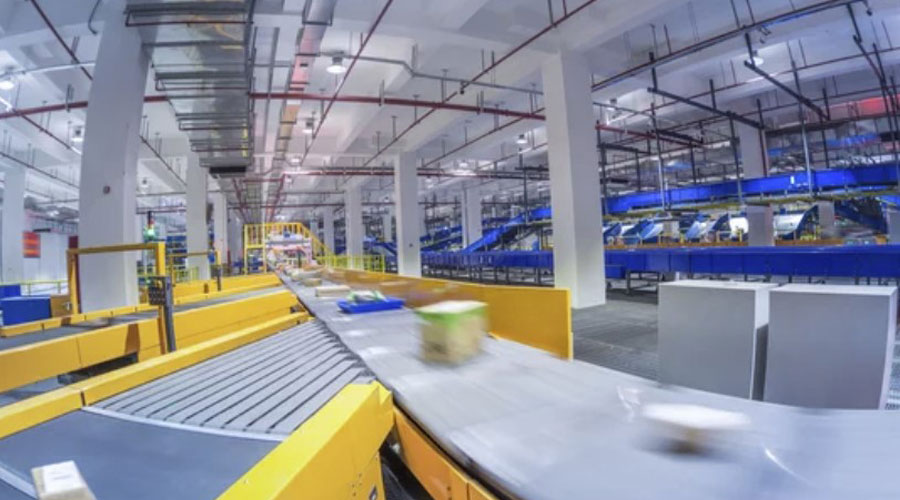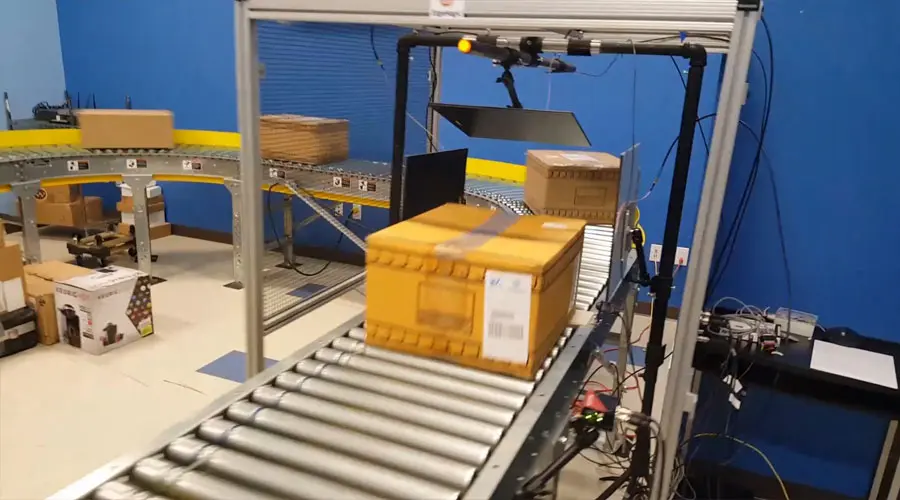
In fast-moving distribution centers, conveyor systems are the heartbeat of fulfillment. But without accurate, real-time visibility, even the most efficient conveyor layout can suffer from slowdowns, misroutes, or missing inventory. And the cost of those errors adds up fast—nearly 8% of warehouse inventory is lost due to misplacement or administrative errors, according to industry reports.
That’s where RFID steps in.
By integrating RFID readers directly into conveyor lines, warehouses can validate every carton and pallet as it moves through the system. RFID tunnels or portals instantly scan tagged items without line of sight, flagging missing products, mispicked items, or order discrepancies on the fly. The result? Fewer manual checks, faster throughput, and a dramatic reduction in fulfillment errors.
Lost Inventory in Warehouses
Inventory loss is a silent profit killer. Nearly 8% goes missing from misplacement, poor visibility, or errors—causing lost sales, delayed orders, frustrated customers, and wasted labor searching for items that may not even be on-site. [Source: GEODIS]
What Is RFID and Why It Matters
Radio Frequency Identification (RFID) is a technology that uses radio waves to automatically identify and track tags attached to objects. Each RFID tag includes a small chip and an antenna. Together, they store important data like product IDs, serial numbers, or shipment details. RFID readers can then capture this data wirelessly—no direct contact or line of sight needed.
Unlike traditional barcodes, RFID tags do not require line-of-sight scanning. This means items can be read through boxes, packaging, or even while in motion. As a result, RFID systems can capture data from hundreds of items in seconds, making them ideal for fast-moving, high-volume environments like warehouses and distribution centers.
In the context of conveyor systems, RFID allows for real-time, hands-free tracking of goods as they move through various stages of fulfillment. It eliminates the need for manual scanning, reduces errors, and provides instant visibility into inventory location and flow. This real-time insight is critical for businesses looking to improve operational accuracy, speed, and scalability.
From receiving and picking to shipping and returns, RFID delivers the visibility and automation modern supply chains need to stay competitive. And when paired with conveyor systems, it transforms traditional workflows into highly efficient, data-driven operations.
Understanding RFID Conveyor Systems
RFID conveyor systems combine RFID technology with conveyor belts and material handling equipment. This setup automates the tracking and identification of items as they move through the supply chain. These systems consist of RFID tags affixed to products or packaging,
RFID readers installed along conveyor lines, and software applications for data processing and analysis. As items pass through the conveyor system, RFID readers capture and record pertinent information stored in the tags, such as product details, serial numbers, and destination locations.
This real-time visibility enables stakeholders to monitor the movement of goods, optimize inventory management, and streamline order fulfillment processes.

The Role of RFID Tunnels
RFID tunnels are specialized enclosures or gateways equipped with multiple RFID antennas strategically positioned to capture tag data from items passing through them. These tunnels serve as highly efficient checkpoints within the conveyor system, allowing for rapid and accurate identification of products without manual intervention.
By leveraging the simultaneous reading capabilities of multiple antennas, RFID tunnels enhance the read rates and accuracy of RFID systems, even in high-speed conveyor environments. This seamless integration of RFID tunnels into conveyor systems enables continuous, uninterrupted tracking of goods, minimizing errors and improving operational efficiency.
Benefits of Tracking Inbound and Outbound Shipping
For manufacturers and distributors, tracking inbound and outbound shipping processes is essential for optimizing inventory management, reducing costs, and meeting customer demand. RFID conveyor systems play a pivotal role in achieving these objectives by providing real-time visibility into the movement and status of goods throughout the supply chain.
Accurately tracking inbound shipments helps manufacturers keep better control of inventory. It allows them to manage stock levels, anticipate production needs, and avoid both stockouts and overstock. On the distribution side, tracking outbound shipments ensures accurate order fulfillment, faster delivery, and higher customer satisfaction.

Improving Shipping and Inventory Accuracy
RFID is gaining ground in logistics and supply chains for one key reason—it’s incredibly accurate. Studies show that RFID systems can reach read rates above 99%, far surpassing traditional barcodes. That kind of precision means fewer shipping errors, better inventory tracking, and smarter decisions on the warehouse floor.
On top of that, RFID tags don’t need to be scanned one by one. They can be read from a distance and in bulk, even through packaging. This makes it easier to track multiple items at once and keep up with the pace of modern fulfillment. In short, RFID conveyor systems offer the speed and accuracy warehouses need to stay efficient and competitive.
Simplifying Integration into WMS Applications
RFID technology facilitates seamless integration with enterprise systems including. Here are a few examples:
- Inventory management software
- Warehouse management systems (WMS)
- Enterprise Resource Planning (ERP)
- Transportation management system (TMS)
enabling automated data capture and synchronization across the supply chain. This integration streamlines workflows, eliminates manual data entry errors, and accelerates order processing times.
Additionally, RFID-enabled conveyor systems support compliance with regulatory requirements and industry standards. Serialization and traceability mandates in the pharmaceutical and food industries, for example, can be reduced with RFID, ensuring product authenticity and safety.
Implementing an RFID Conveyor System
RFID conveyor systems are changing the game in logistics and supply chain management. They provide unmatched visibility, accuracy, and efficiency. With RFID, businesses can track inbound and outbound shipments more reliably than ever before.
With the integration of RFID tunnels and advanced data capture technology, these systems enable seamless identification and monitoring of goods as they traverse the supply chain.
Manufacturers and distributors stand to benefit significantly from the transformative capabilities of RFID conveyor systems, including optimized inventory management, reduced operational costs, and enhanced customer satisfaction. As the demand for faster, more agile supply chains continues to grow, RFID technology remains at the forefront of innovation, driving the evolution of modern logistics toward greater efficiency and effectiveness.
Interested in RFID?
An RFID tracking system can help organizations of all sizes improve their supply chain efficiency. Contact the CYBRA team to schedule a demo today.















